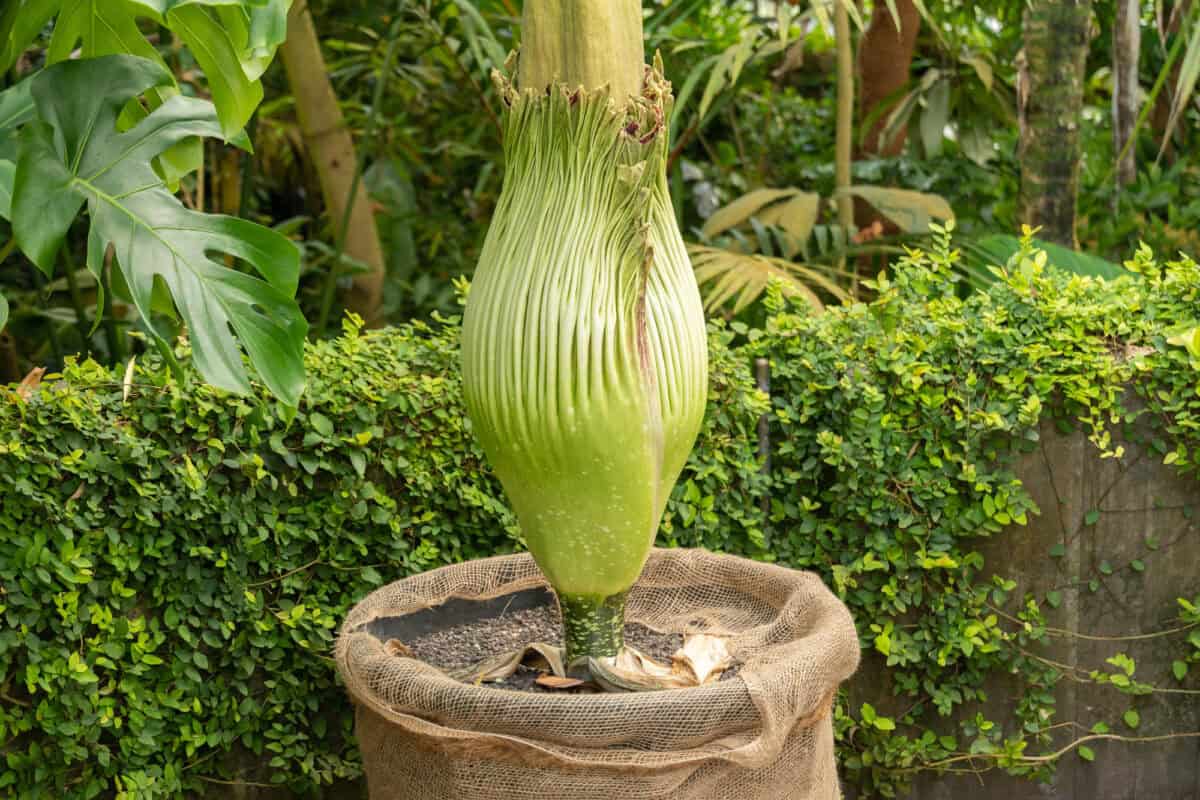The Titan Arum, scientifically known as Amorphophallus titanum, is a marvel of the plant kingdom. It boasts the largest unbranched inflorescence in the world, a structure so impressive that it draws plant enthusiasts and curious onlookers alike whenever it blooms. Yet, what sets the Titan Arum apart from other large-flowered plants is its notorious smell—often compared to that of rotting meat. This malodorous attribute has earned the plant its evocative nickname, the “corpse flower.”
The Purpose of the Foul Odor

While unpleasant to humans, the Titan Arum’s powerful scent plays a crucial role in the plant’s reproduction strategy. Many flowers rely on sweet fragrances and enticing colors to attract pollinators. However, the Titan Arum operates quite differently. Its smell mimics the odor of decaying flesh, a clever adaptation designed to attract a specific group of pollinators: carrion beetles and flesh flies. These insects are naturally drawn to the scent of decomposition, expecting to find a meal or a suitable place to lay their eggs.
The Mechanics Behind the Smell

The production of the Titan Arum’s distinct odor involves a complex cocktail of chemical compounds. Scientists have identified several components responsible for the scent, including dimethyl trisulfide, which gives off a garlic-like smell, and isovaleric acid, reminiscent of stinky cheese. These compounds are released at specific times during the flowering process to optimize the attraction of pollinators. Remarkably, the Titan Arum also generates heat to help disperse these volatile odors more effectively, further mimicking the conditions of decaying organic matter.
The Flowering Event

The Titan Arum’s bloom is not only spectacular in size but also in rarity. The plant may take several years to store enough energy to finally produce its infamous flower, which might only bloom for 24 to 48 hours. During this brief period, the plant pulls out all stops to ensure successful pollination. The spadix, the central spike of the flower, heats up to as much as 98 degrees Fahrenheit to help volatilize and release its olfactory signals.
Ecological and Evolutionary Significance

The Titan Arum’s evolution towards such a unique pollination strategy illustrates the diverse and complex relationships between plants and their pollinators. In the dense rainforests of Sumatra, where this plant is endemic, adapting to a niche pollinator minimizes competition for the attention of beneficial insects. The plant’s ability to mimic the scent of rot highlights the intricate evolutionary dance that has refined its reproduction methods over time.
Conservation and Cultivation

Today, the Titan Arum faces several threats in its natural habitat due to deforestation and habitat loss. Conservation efforts are critical to preserving its unique ecological niche. Botanists have successfully cultivated Titan Arums in botanical gardens around the world, not only to ensure its survival but also to educate the public about its fascinating biology and conservation importance. These cultivated blooms continue to captivate audiences, providing an opportunity to witness one of nature’s most extraordinary sensory experiences firsthand.
Conclusion

The Titan Arum is a testament to the wonders of evolution and the diverse strategies plants use to reproduce. Its unmistakable scent, reminiscent of decomposing meat, is just one example of how life on Earth has adapted to the challenges of survival. While the smell may be off-putting to many, it serves as a reminder of the interconnected world of plants and insects and the lengths to which species will go to thrive.
- The Secretary Bird A Raptor That Hunts on Foot - August 9, 2025
- 10 Dog Breed Restrictions That Stir Controversy in U.S. States - August 9, 2025
- 13 Animals That Outsmart Their Predators - August 9, 2025

